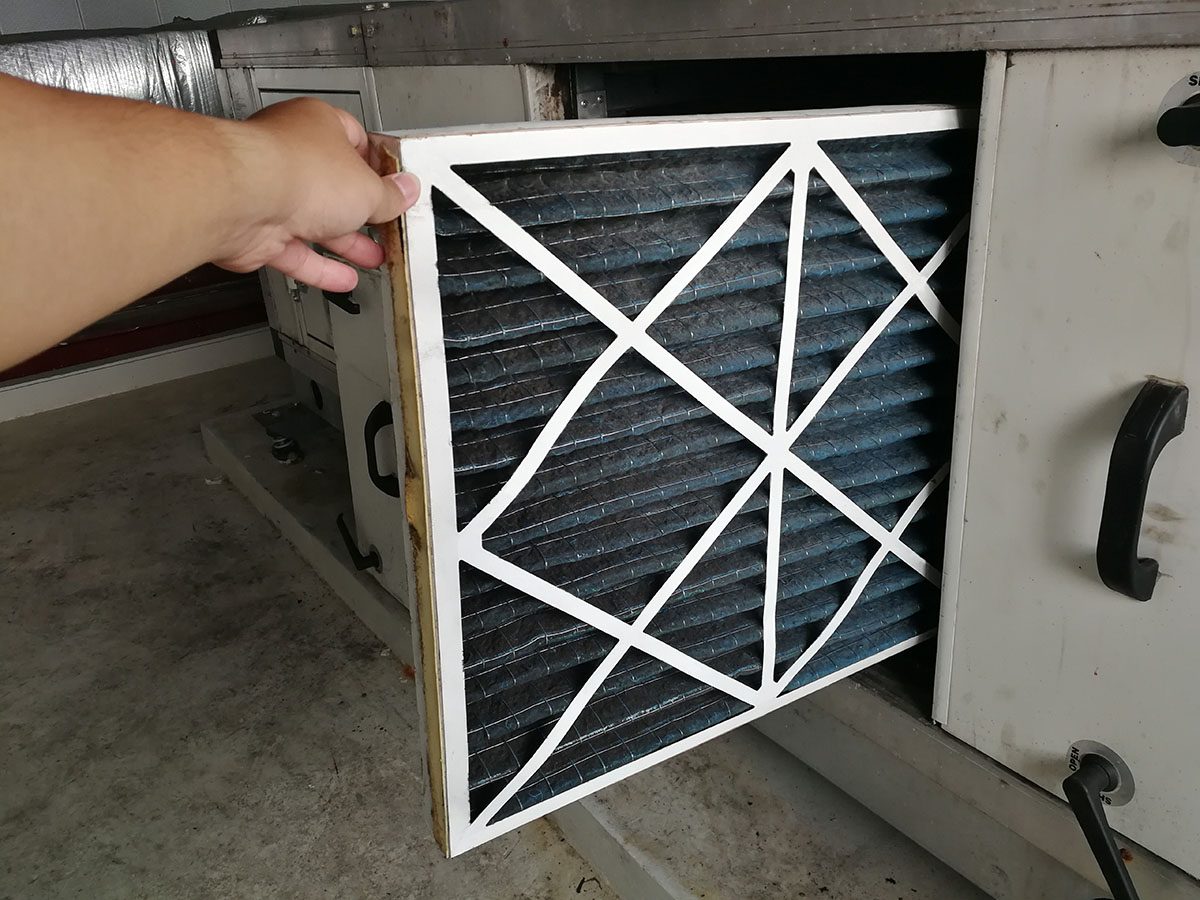Negligent about replacing your furnace filter regularly? It's costing you clean indoor air and extra money on utility bills, unnecessary furnace repairs and more.

5 Furnace Filter Myths You’ll Want to Know

If you were to let unfiltered air into your furnace, its performance would suffer as dust settled on the heat exchanger and other parts, and that would reduce the service life of your most important appliance. That’s one reason why you need furnace filters, and there’s another. Filters purify the air coming from the furnace so you don’t have to inhale microscopic dust particles and other contaminants.
In other words, furnace filters are invaluable for keeping your home’s heating system operating smoothly and keeping you and your family healthy. Filters come in a variety of styles, and some are more efficient than others, and there are plenty of misconceptions when it comes to using them properly.
Here, with the help of HVAC techs John Gabrielli and Jimmy Hiller, we’ll debunk some common filter myths you shouldn’t believe.
On This Page
Fiberglass Filters are Fine if You Change Them Regularly
There’s a reason you can almost see through fiberglass filters—they don’t filter very well. That’s why they last so much longer than pleated filters. Because they don’t capture the finer debris, they don’t clog as fast as higher-quality filters. That fine dust hangs around in your indoor air and circulates within the furnace, where it’ll build up on (and damage) interior mechanical and electronic parts. Instead, use pleated paper filters.
You Should Replace Your Filter Every 30 Days
The truth is that you should change your filter when it’s dirty, not on some arbitrary schedule. According to Gabrielli, the replacement period “depends on your specific system.” So how can you tell when the filter needs replacing? Every month, pull the filter from your furnace and compare it to the new one. Then, you’ll easily be able to tell when the dust is covering the filter and it needs to be replaced. It’s a good idea to always have at least one new replacement filter on hand so you can do this.
The Higher the MERV Rating, the Better
When it comes to furnace filters, they are “MERV” rated according to how finely they filter the air. MERV is an acronym for “minimum efficiency reporting value,” and the range is from 1 to 16, with 1 being the most porous and 16 the finest. One might think the higher the MERV rating, the better, but this is a filter myth.
For most homes, a MERV rating of 8 to 12 is plenty good. They will filter the vast majority of airborne particles and provide plenty of protection for furnace components. Higher MERV filters plug up much faster, so they need replacing more frequently. Only homes that have family members with respiratory issues, serious allergies or low-immunity issues should bother with filters rated above 12.
Staying on Top of Filter Changes Means Fewer Furnace Tune-Ups
You might think that your furnace’s innards will stay pristine with frequent filter replacement, and that’s not completely inaccurate. “A clean air filter improves air quality and ensures efficient airflow, reducing the strain on the furnace,” says HVAC pro Jimmy Hiller. However, it’s just another furnace myth to think that’s all you have to do.
It’s important to have your furnace professionally serviced once a year or so. A furnace tune-up is an overall system performance check that assesses the furnace’s operation in its entirety, from start-up to shut-down. Technicians will clean internal components and the condensate line and perform a combustion analysis for O2, CO and CO2 to make sure your furnace is performing safely and up to par. In particular, says Hiller, the carbon monoxide check “is not to be overlooked.” Just as important, they’ll ensure your heat exchanger is intact, and that’s a big safety issue.
Washable Filters are Better Than Disposable Ones
Washable filters require far more effort than simply swapping a dirty disposable filter for a new one. Plus, it’s difficult to get washable filters completely clean. Washable filters only offer MERV ratings between 1 and 4, so they don’t provide good filtration either. Since they cost $80 to $100, the payback just isn’t worth the trouble and substandard filtration. However, if you’re ecologically minded and detest the idea of throwing away filters, you’ll just have to accept a somewhat subpar filtration system.
About the Experts
- John Gabrielli has been around the HVAC trades all his life. He is the Owner/Operator of Air Temp Solutions based in Sacramento CA.
- Jimmy Hiller is the President and CEO of Happy Hiller, a plumbing and HVAC company based in Tennessee.



















